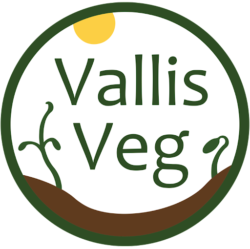The main focus of our farming is on vegetable production, but we do sometimes keep some livestock.
Livestock farming has acquired a bad name in the environmental movement, not without good reason, because livestock are major producers of greenhouse gases, because they use up land or food resources that could otherwise be devoted to human use, and because intensive meat production is often not conducive to good animal welfare.
These problems occur largely when the demand for livestock products drives the farming system. By contrast, when livestock are integrated as components of a larger vegetable-growing system we believe that they can make the farm a more efficient and less environmentally-damaging place. Simon Fairlie’s excellent book Meat: A Benign Extravagance explains how this is so in some detail. Essentially, livestock can access nutrients that are hard for humans to obtain directly, and make them more easily available to us. They also often bring other farm management benefits, which would otherwise require greater inputs of fossil energy or human labour.
In this context, the main role of the livestock is, as described above, to improve the efficiency and sustainability of ther holding. It achieves this in the following ways:
· by doing work that we would otherwise have to do ourselves, often with powered machinery burning fossil fuels
· by acting as biological pest & weed controllers, replacing the need for synthetic agro-chemicals to do the job
· by moving fertility around the holding, saving us work and increasing its biodiversity
· by integrating carbon-sequestering resources such as permanent grassland and trees into the farm production system, helping improve the farm’s carbon footprint
Much of the good work livestock do involves them expressing their natural behaviours (foraging, rooting, scratching etc) and so we believe this kind of system is conducive to good animal welfare. And the landscapes they inhabit such as permanent conservation grassland, woodland, and ponds are also good environments for wild plants and animals. It would be possible in theory to plough up these areas to grow more annual vegetables for human consumption, but the vegetables need to get their fertility from somewhere, and we believe that to derive a part of it extensively from the carbon-sequestering and wildlife-friendly landscapes associated with livestock constitutes a better overall system design.
All in all, we think that a system of this kind can be more environmentally sustainable, wildlife friendly and efficient than a stockfree arable system. In some cases, we think it’s still probably more energy- or climate-friendly to use machinery rather than livestock. We are continually questioning and experimenting with different ways of doing things.
